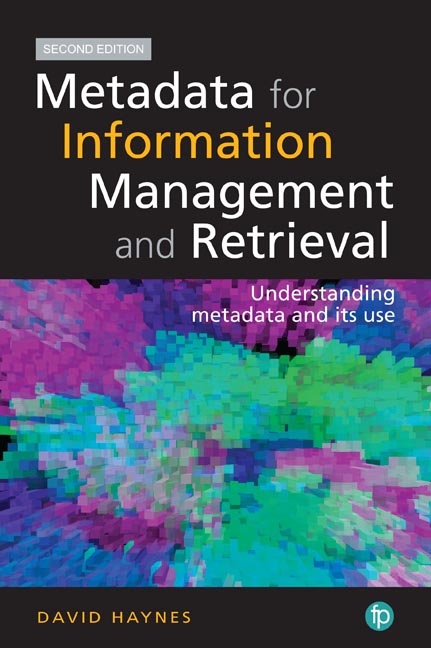11 - Managing metadata
from PART III - MANAGING METADATA
Published online by Cambridge University Press: 08 June 2018
Summary
Overview
This chapter considers the issues surrounding the management of metadata and describes some of the techniques that are used for metadata management. The project lifecycle concept is used as the framework for discussion of metadata management. The management of metadata starts with analysing metadata requirements and moves on to the development and selection of metadata schemas. There is then a discussion about encoding metadata and the use of controlled vocabulary before turning to content rules. Interoperability of metadata schemas focuses on crosswalks and metadata registries. Quality management covers the use of administrative metadata and reviews issues such as security of information. The final part of the chapter looks at user education and the presentation and use of search aids to make metadata more accessible. The chapter concludes with a view on convergence of management practice for metadata across the domains.
Metadata is an information resource
Managing metadata, like other aspects of information management, has to be appropriate to the requirements of its users and fit for purpose. If the metadata is too detailed, it is costly to maintain. If it is not detailed enough, the functionality is severely limited. Metadata must be applied in a consistent way and should be retrievable by those who need access to it. The management of metadata can be seen as a series of stages, although in most instances a user will only be concerned with one or two stages in the cycle.
Metadata is an information resource and as such can be described in terms of a lifecycle with specific activities and processes at each stage:
• Analysing metadata requirements – This will be determined by the main purpose (or purposes) of the metadata.
• Selecting and developing metadata schemas – Factors such as the nature of the data being described, the community using it, and pre-existing conventions and standards need to be taken into account.
• Encoding and maintenance of controlled vocabularies – Many metadata standards do not specify what encoding is used. Controlled vocabularies can be developed and maintained using thesaurus techniques.
• Applying metadata – Cataloguing rules can be used to ensure consistency in the way in which metadata is applied.
• Importing metadata – The choice of source of metadata to import will depend on factors such as the quality of data available and its compatibility. Crosswalks and metadata registries provide a means of mapping between different schemas.
- Type
- Chapter
- Information
- Metadata for Information Management and RetrievalUnderstanding metadata and its use, pp. 163 - 184Publisher: FacetPrint publication year: 2018



